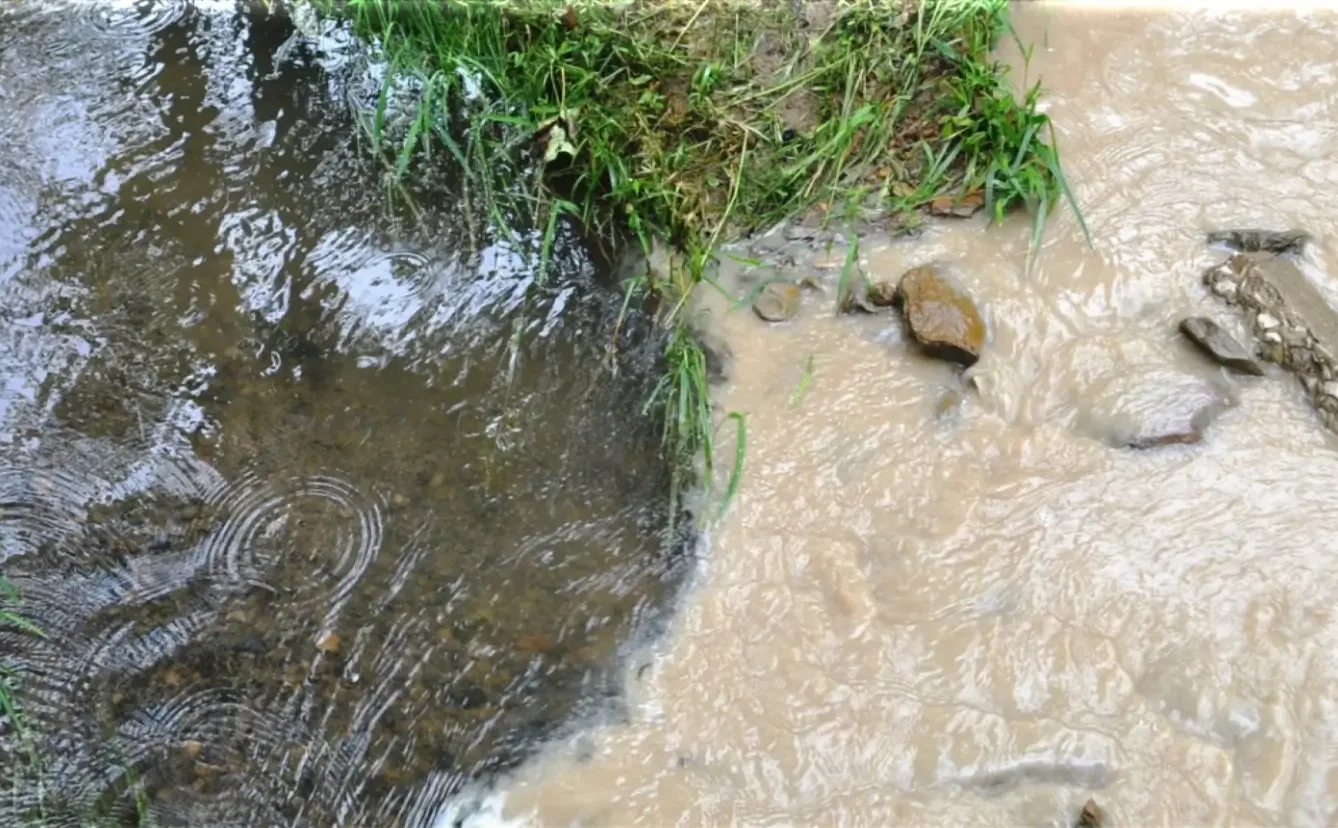Silty Water Environmental Impact
Water Pollution ManagementWhat Is Silty Water?
- Silty water is a suspension of soil particles within a water body
- Suspended particles can be of varying grain size:
- Clay
- Silt Sand
- Fine Gravel (fast-flowing waters)
- They make water have a cloudy (turbid) appearance
- In low flow (still) conditions, medium and large-sized particles may settle out of suspension, blinding off the bed of the water body.
- Small fine particles may remain in suspension for long periods of time and be able to travel long distances.

Why the Concern?
- Silt pollution is highly visible
- Easily traceable back to the sity
- Can travel a long way
- Can cause significant environmental harm
- Large quantities can escape
- It’s a common reason for construction company’s going to court

Silt Can Travel a Long Way

0 KM

1 KM

4 KM
How Common Is Silt Pollution?

UK Environment Agency
- Over 23% of rivers are at risk
from high levels of sediment - In 2004 50% of rivers with salmon
action plans were at risk of missing their egg deposition targets - In 2008 90% of trout spawning beds studies contained enough fine sediment from soil to kill 50% of the eggs and larvae
Construction Companies Are a Common Source of Silty Water

Figure 2. Typical erosion rates from land-based activities.
(Dunne, T. and L. Leopard, 1978; NRCS, 2000; NRCS, 2006; ASCE and WEF, 1992)
In the USA They Estimate That
- Over 30% of erosion is caused by natural processes
- Approximately 70% is the result of mans activities
- Erosion causes $16 billion of environmental damage per year
Erosion
- The process by which the land surface is worn away by the action of water or wind.
Sedimentation
- The movement and settling out of suspended soil particles.
Factors Affecting Erosion
Slope
The steeper the slope the faster the water will run-off, giving less time for it to soak into the ground
Soil
The more permeable the ground the greater the percentage of the storm water that will soak in, reducing volumes available to run-off. Fine grained soils (fine silts and clays) have poor settling characteristics, making them more difficult to recover.
Vegetation
Helps slow water velocities, encouraging it to soak into the ground and bind the soil together. Erosion rates are greater on exposed (bare soil)
Annual rainfall
The greater the rainfall the greater the amount of run-off which will be generated
Drainage Area
The greater the area drained, the larger the volume of water which will be generated.

Erosion = exposed soil X overland flow of water
How Silty Water Affects a Water Course

- A 5 Nephelometric Turbidity Unit (NTU) increase in turbidity in a clear water lake may reduce the productive volume of that lake by about 80%
- A 25 NTU increase in a clear water stream 0.5 m deep may reduce plant production by approximately 50% (Lloyd et al. 1987)
- A 5 NTU increase in turbidity in a clear stream 0.5 m deep may reduce primary production by 13% or more, depending on stream depth
Environmental Harm
- Can suffocate fish by blocking gills
- Can strip out dissolved oxygen
- Prevent sunlight penetrating the water
- Settle out on the bed of the river
- Blind off of gravel beds
- Combine with other contaminants
How Silty Water Affects a Water Course
Man made vs natural (1)

Man made vs natural (2)

Summary
- Silt pollution is a common pollutant that is often overlooked
- The release of even small quantities of sediment into a waterway can have dire consequences for the health (biodiversity) of the water body
- Large extents of our inland waterways are being adversely affected by sediment
- Human activities are the main cause
- Construction sites can be a major source of silt pollution
Prevent silt pollution…
protect the environment


Simon Skentelbery
General Manager
John F Hunt Regeneration Ltd
London Road
Grays
Essex
RM20 4DB
M: 07967 306 517
E: simon.skentelbery@johnfhunt.co.uk
W: johnfhuntregeneration.co.uk